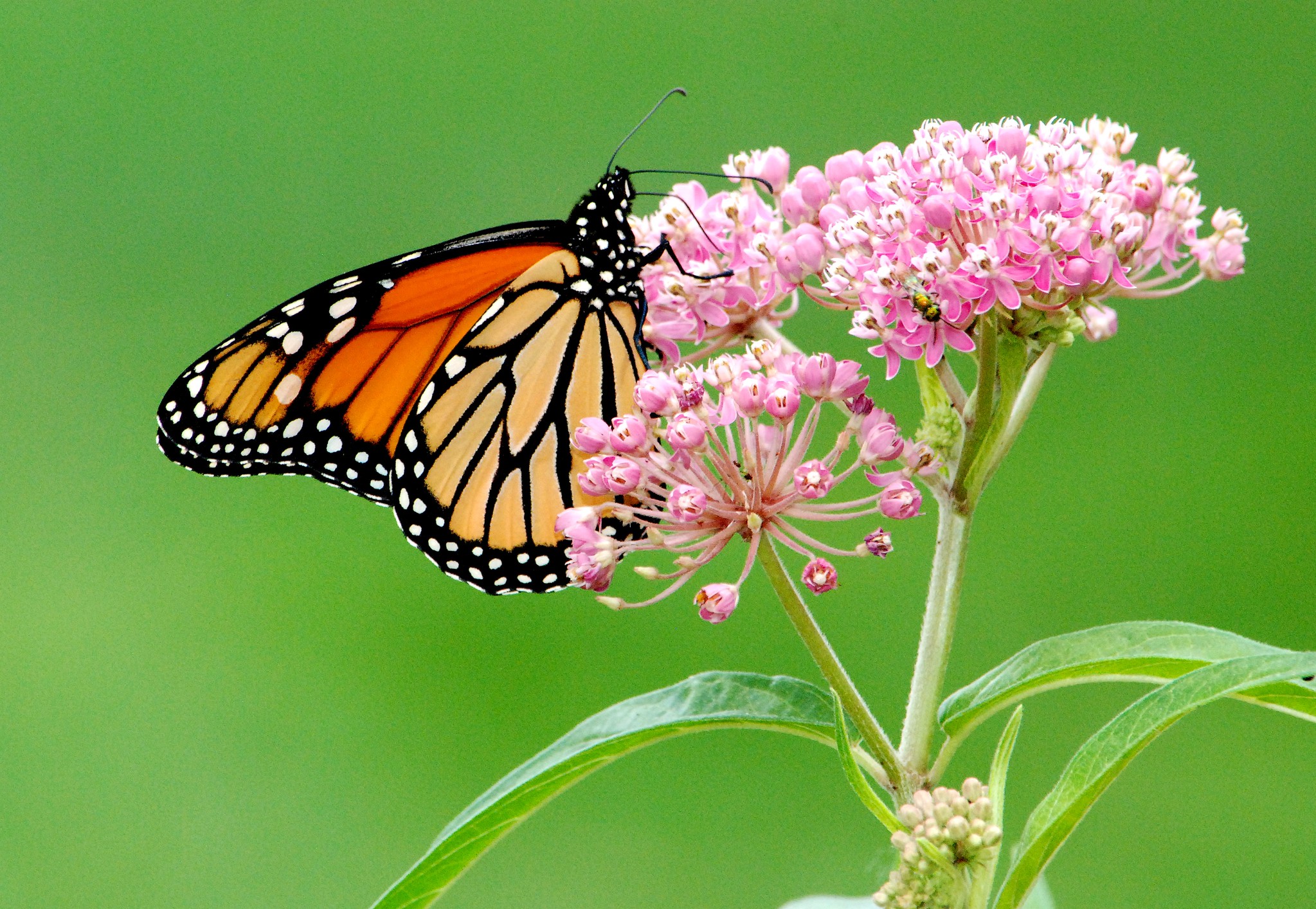Why Swamp Milkweed Is a Must-Have for Your Garden
If you’re aiming to create a pollinator-friendly garden or a beautiful, native wildflower oasis, Swamp Milkweed (Asclepias incarnata) should be at the top of your list. Native to wetlands across North America, this perennial is not only a striking addition to any landscape but also an essential plant for Monarch butterflies.
- Pollinator powerhouse—a must-have for Monarchs and other butterflies.
- Beautiful, pink flowers that bloom in late summer and attract a variety of beneficial insects.
- Thrives in wet, moist conditions—perfect for rain gardens and areas with poor drainage.
Swamp Milkweed isn’t just pretty to look at—it’s a lifeline for Monarch butterflies, providing the nectar they need during their migration. It’s a low-maintenance beauty that can handle difficult growing conditions like moist soil and wetland environments, making it an excellent choice for gardeners looking to support native wildlife.
Growing Conditions
- Sun: Full sun to partial shade
- Soil: Moist, well-drained soil (prefers wet conditions but can adapt to average garden moisture)
- Water: Tolerates wet soils but does well in moderately moist gardens
- Height: 3-5 feet
- Hardiness Zones: 3-9
Swamp Milkweed thrives best in wet or moist, well-drained soil—perfect for those areas where water tends to accumulate, such as rain gardens, pond edges, or along streams. While it loves moisture, it’s adaptable to regular garden soil with sufficient watering. It’s also an excellent plant for naturalized landscapes that mimic wetland habitats.
Wildlife Benefits
- Monarch Butterfly habitat—Swamp Milkweed is an important host plant for Monarch larvae and provides nectar for adult butterflies.
- Pollinator magnet—it attracts a variety of bees, butterflies, and hummingbirds, especially during its long bloom period in the summer.
- Beneficial insects—beetles, flies, and other pollinators love the rich nectar.
- Birds love the seeds—after blooming, the seed pods provide a valuable food source for songbirds in the fall.
By planting Swamp Milkweed, you’re creating a thriving ecosystem that supports pollinators, butterflies, and even songbirds. As Monarchs are in steep decline, planting this species is a small but powerful step in the conservation effort to support their populations.
How to Grow It
Planting Tips:
- Space plants about 18-24 inches apart—Swamp Milkweed grows tall and upright, so give it plenty of room to stretch out.
- Plant in spring or early fall, after the last frost, so the roots can establish before the heat of summer.
- Prefers moist, well-drained soil, and can tolerate periods of wet conditions.
- Full sun is ideal for the brightest blooms, but it can tolerate partial shade as well.
Maintenance:
- Cut back dead stems in early spring to promote fresh growth.
- Deadhead spent flowers to encourage continuous blooming and reduce self-seeding.
- Regularly water during dry periods, especially when the plant is getting established.
- Avoid over-fertilizing—Swamp Milkweed does best with minimal nutrients.
Best Companion Plants
Swamp Milkweed pairs well with other native wetland plants that also support pollinators and wildlife:
- Asclepias tuberosa (Butterfly Weed) – This plant attracts many of the same pollinators as Swamp Milkweed and provides complementary color with its bright orange blooms.
- Echinacea purpurea (Purple Coneflower) – Attracts similar pollinators and creates a vibrant contrast with Swamp Milkweed’s pink flowers.
- Rudbeckia hirta (Black-eyed Susan) – Adds a sunny yellow contrast to your garden, and both plants attract pollinators like bees and butterflies.
- Lobelia cardinalis (Cardinal Flower) – A beautiful wetland native that blooms in red, complementing the pink hues of Swamp Milkweed.
Why You Should Grow Swamp Milkweed
- Vital for Monarch butterflies—provides nectar and serves as a host plant for their larvae.
- Attractive to pollinators—a magnet for bees, butterflies, and hummingbirds.
- Thrives in wet, moist conditions—perfect for rain gardens, pond edges, or areas with heavy moisture.
- Low maintenance—adaptable and easy to grow in a variety of conditions.
- Beautiful pink blooms—a show-stopper that brings beauty and function to your garden.
Swamp Milkweed is an incredible asset to any garden, whether you’re looking to create a pollinator haven or just want a beautiful, low-maintenance plant that thrives in wet soils. Add it to your garden, and you’ll be rewarded with a blooming landscape that benefits both you and the local wildlife.
Planting Swamp Milkweed not only brightens up your garden but also contributes to larger-scale conservation efforts for Monarchs and other essential pollinators. It’s an easy way to support biodiversity, and by growing it in your own space, you’re making a significant impact.

